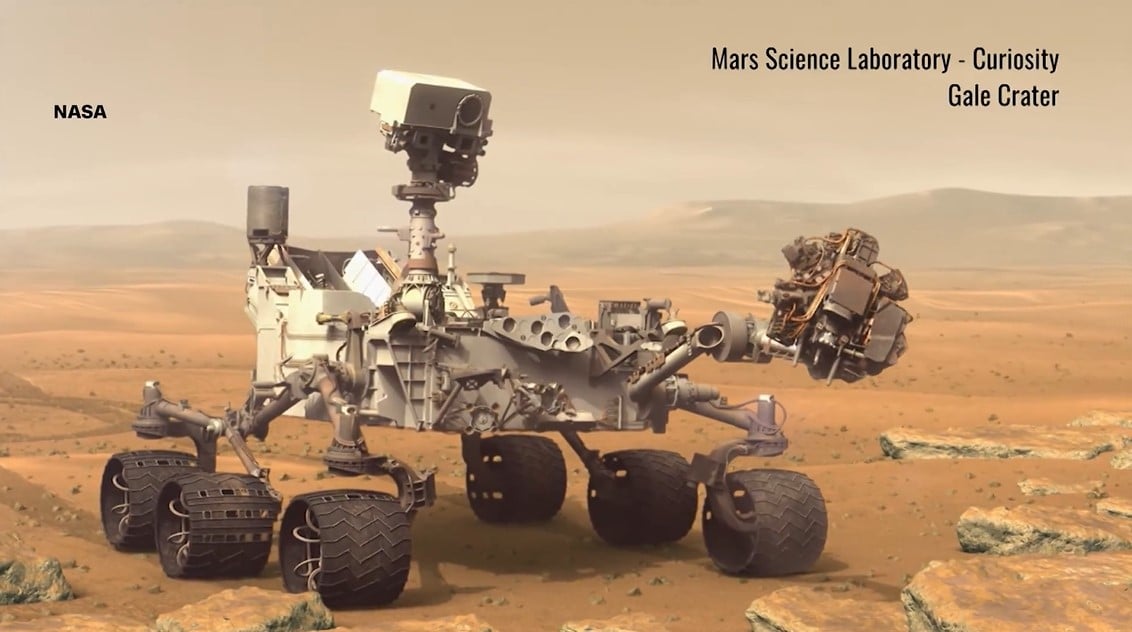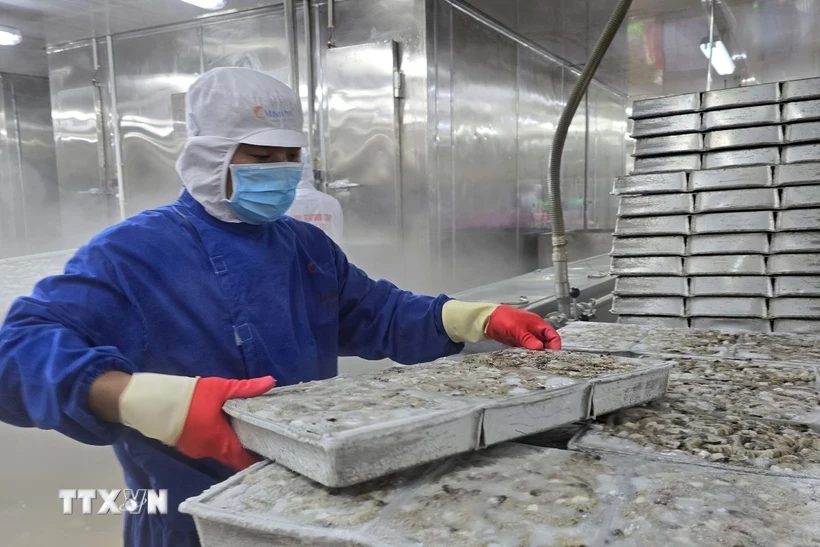Compounds such as decane, undecane and dodecane were found in a 3.7-billion-year-old rock sample, analyzed by the Sample Analysis at Mars (SAM) laboratory on board.

NASA's Curiosity rover drilled into a rock called Cumberland and collected powdered samples from inside the rock. (Photo: NASA)
An interesting discovery
They could be fragments of fatty acids — the building blocks of life — or form from chemical reactions unrelated to life, such as when water interacts with minerals in hydrothermal vents.
While not yet confirmed as signs of life, the discovery adds to a growing list of organic compounds that rovers have found on Mars. Scientists believe that if life ever existed, traces of it may have survived millions of years of intense radiation on the planet.
The research bolsters hopes that Mars may have preserved complex organic molecules, opening up the possibility of discovering ancient life. It also bolsters plans to return samples to Earth for analysis using more advanced technology, helping to determine whether life once existed beyond our planet.
Curiosity preserved the Cumberland sample for long-term study, even from a distance from its collection site. When testing for amino acids—the building blocks of proteins—the team found nothing, but they did find something completely unexpected.
The team was surprised to find small amounts of decane, undecane, and dodecane — likely remnants of fatty acids. To verify this, they conducted experiments on Earth and found that these acids release decane, similar to what Curiosity found.
These compounds have longer carbon chains than any organic molecules previously found on Mars. This is important because non-biological processes typically produce shorter fatty acids, while larger, more complex molecules may be associated with life.
While SAM was not designed to detect longer fatty acids, the discovery suggests it could pick up chemical signatures of life, if they existed. "Curiosity is not looking for life, but rather testing the possibility that Mars once had conditions suitable for life to form," the scientist said.

Curiosity rover. (Photo: NASA)
Scientists had not previously expected to find organic molecules on Mars due to the high radiation. However, the Cumberland sample is still on board and the team hopes to conduct further experiments to explore this mystery. “This could be the most exciting organic discovery on Mars to date,” said Dr Pearce, noting that some of the same fatty acids formed the first simple cell membranes on Earth.
While not yet proof of life, the discovery bolsters hopes that sediments from ancient water environments on Mars could preserve important organic molecules, opening up opportunities for research into the origins of life.
Waiting for further discoveries
The European Space Agency plans to launch the ExoMars Rosalind Franklin rover in 2028. It will carry additional equipment for SAM and be capable of drilling 2 meters deep, helping to search for larger and better preserved organic molecules.
While Curiosity can't send samples back to Earth, Perseverance is collecting samples from Jezero Crater — an ancient lake and river delta — to bring back as part of the Mars Sample Return program in the 2030s.
Both spacecraft have detected many organic molecules, suggesting that organic carbon is widespread on Mars. However, current instruments are not yet capable of determining their origin.
If the molecules in the Cumberland sample are traces of bacterial life from 3.7 billion years ago, that would coincide with the beginning of life on Earth. Glavin said Curiosity is very close to answering that question, but only Earth-based research could provide the final answer.
Ha Trang (according to NASA, CNN)
Source: https://www.congluan.vn/phat-hien-cac-phan-tu-huu-co-gan-lien-voi-su-song-tren-sao-hoa-post341013.html





![[Photo] Comrade Khamtay Siphandone - a leader who contributed to fostering Vietnam-Laos relations](https://vstatic.vietnam.vn/vietnam/resource/IMAGE/2025/4/3/3d83ed2d26e2426fabd41862661dfff2)
![[Photo] Moment of love: Myanmar people are moved to thank Vietnamese soldiers](https://vstatic.vietnam.vn/vietnam/resource/IMAGE/2025/4/3/9b2e07196eb14aa5aacb1bc9e067ae6f)
![[Photo] Special relics at the Vietnam Military History Museum associated with the heroic April 30th](https://vstatic.vietnam.vn/vietnam/resource/IMAGE/2025/4/3/a49d65b17b804e398de42bc2caba8368)






































































![[Podcast] News on March 24, 2025](https://vstatic.vietnam.vn/vietnam/resource/IMAGE/2025/4/3/f5fa1c3a9ae14d4590ac6965d233586b)












Comment (0)